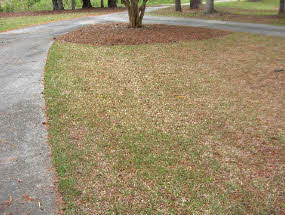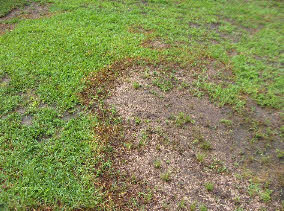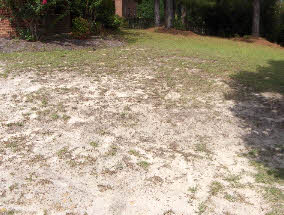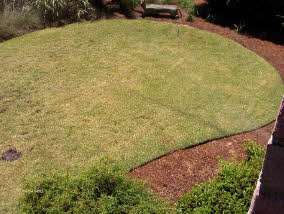The above statement is echoing throughout the Midlands of South Carolina, and everybody I have talked to is sure the condition is a result of the cold winter we have experienced. There is no doubt that a large number of lawns were damaged by last winter’s temperatures. Was it the unseasonably low or the unseasonably warm temperatures? It was a combination of both.
Turf grass injury of our warm season turf grasses is caused by dropping freezing temperatures below 20 degrees F, following several warm days. The injury is compounded when this weather pattern is repeated during the winter and early spring.
The damage has been done, the dye has been casted. What are we homeowners to do? Treatment depends on the degree of damage.
The following suggestions are based on green industry information and my experience for the last 44 years. So nobody get excited if your opinion is different from mine.
Bringing your Lawn Back.
If your lawn has a light green color in the spring, water and fertilize as normal. As the lawn begins to green-up to its natural color, the developing roots will begin growing deeper. One word of caution, when turfgrass is stressed and thinning, weeds will come to visit, therefore be wary of applying pre-emergent herbicides to prevent germinating weeds, especially on stressed turf grass. A post-emergent herbicide approved for your turf grass can be used if it will not interfere with turf root development. Set your mowing height in the upper range of the recommended mowing height. This will encourage deeper root development. This is a suggestion, if your turf has developed ½ inch or more thatch, you may lightly top dress ½ ton of dark fill sand per 1000 sq. ft. of lawn area during the spring. Soil microorganisms will feed on the thatch and the new grass runners will develop over the sand. “Frequent, light soil topdressings have been repeatedly shown to be the most effective and consistent method of reducing thatch. (Bert McCarty-editor, SOUTHERN LAWNS, Best Management Practices for the Selection, Establishment and Maintenance of Southern Lawngrasses) Clemson University.
Dead Areas Less Than 3 Feet in Diameter. Rake these areas to remove thatch, dead visible leaves and stolens. Water and fertilize as required to encourage covering runners in late spring and summer. Follow the information from above.
Dead Areas More Than 3 Feet in Diameter. Rake these areas to remove thatch, dead visible leaves and stolens. Install new sod in these areas. Water and fertilize as required. Remember, no pre-emergent herbicide should be applied to new sod areas for the first growing season.
Dead Areas Less Than 50 Percent of Lawn. Prepare the area or areas as above and install sod as needed.
Dead Areas More Than 50 Percent of Lawn. It is more economical to replace the total area than to spend extra money on labor to trim and patch sod in several places, areas varying in shapes and sizes.
Are You Really Sure That Your Lawn’s Condition Was Caused By Winter Injury?
Which of the Following is Winter Injury?
None of the above. These are diseased Lawns. If you would have installed sod in these areas, the new sod would return to the previous condition, you would be losing money.
 This is winter injury. This is a centipede lawn that is poorly responding to the May temperatures. This could be confused with other lawn diseases.
This is winter injury. This is a centipede lawn that is poorly responding to the May temperatures. This could be confused with other lawn diseases.
This article was written by Ron Cowart, Cowart Landscape Consulting, cowartconsulting@gmail.com (803) 513-4242








